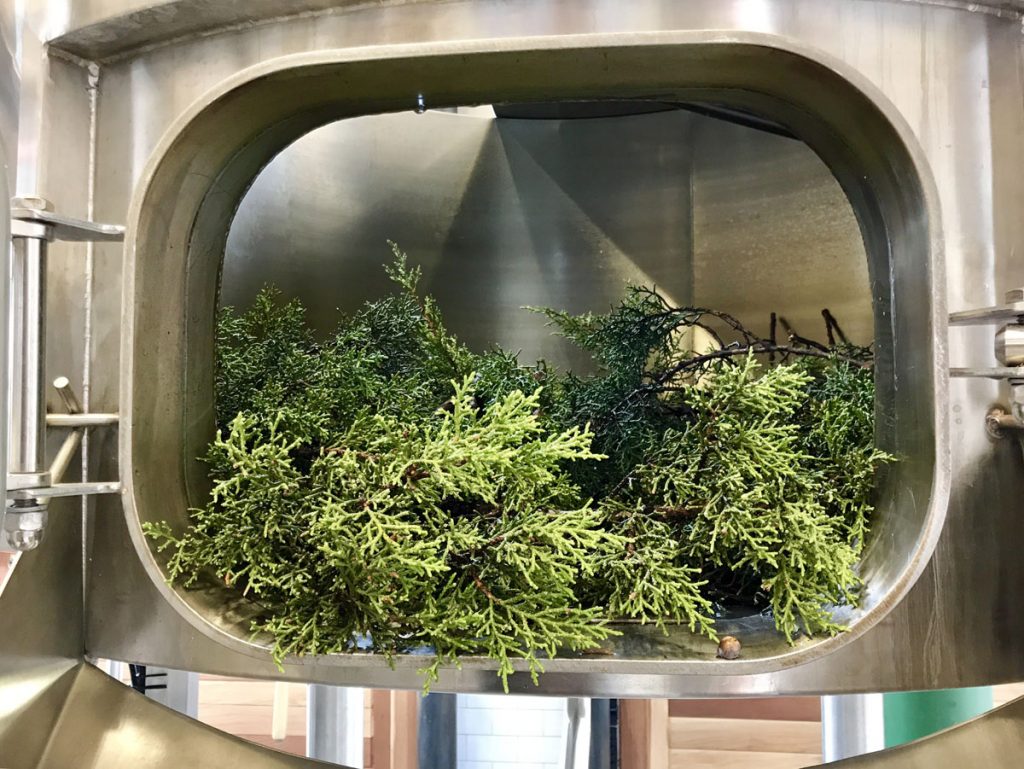Mommy, where does beer come from? Well, my child, I’m glad you asked. Beer isn’t something the stork drops into your lap. There’s a process combined with ingredients that have a story all their own. If you venture to harness the power of the earth – creating something from elements of the land and utilizing commodities found within the small orbit of your locale – you may find yourself on a journey to another time. A beer like this is an experience that employs the participation of all the senses and welcomes a kind of nostalgia. When you take a sip of Utah Valley Foraged Ale from Strap Tank Brewery, you’ll be transported to a familiar place. This beer tastes like Utah. It tastes like home.
There was a time when foraging for food was a daily part of human life. In our modern world, we have the convenience of grocery stores, restaurants, and food as fast as you need it to be. We no longer play an active role in the origins of our sustenance. There is an ambivalence and disconnect from this vital piece of our existence. We’ve come so far that our instincts are leading us back to the beginning. We crave that connection with our environment. It’s no surprise that we flock to farmers markets and seek to escape the drudgeries of life by heading for the hills whenever possible.
The human condition is often reflected in pop culture and art. And what is beer if not an art form? Scratch Brewing Company in southern Illinois is a brewery and farm dedicated to making home grown beer. They grow and forage their ingredients locally and wrote the book (literally) on making beer from scratch. The Homebrewer’s Almanac is a resource for making seasonal farmed and foraged beer. Brewers Mike Dymowski and Jayson Reynolds took inspiration from Scratch when creating the Utah Foraged Ale for Strap Tank Brewing in Springville, Utah.
 The original beer, released in the fall of 2017 under the moniker, Treebeerd, was made with juniper and spruce tips foraged from the mountains near the brewery. This year, a stronger version, available in bottles from the brewery, was made with a little help from the community. Strap Tank posted fliers in early June inviting locals to join in on a foraging excursion to nearby Maple Mountain to gather ingredients for the 2018 iteration of the beer. Several Strap Tank employees and regulars joined the outing where, under the tutelage of Dymowski and Reynolds, they learned how to recognize and properly harvest the bright green boughs of spruce from the sun-kissed forest – fresh and clean from recent snow melt.
The original beer, released in the fall of 2017 under the moniker, Treebeerd, was made with juniper and spruce tips foraged from the mountains near the brewery. This year, a stronger version, available in bottles from the brewery, was made with a little help from the community. Strap Tank posted fliers in early June inviting locals to join in on a foraging excursion to nearby Maple Mountain to gather ingredients for the 2018 iteration of the beer. Several Strap Tank employees and regulars joined the outing where, under the tutelage of Dymowski and Reynolds, they learned how to recognize and properly harvest the bright green boughs of spruce from the sun-kissed forest – fresh and clean from recent snow melt.
This was more than just a nature hike. Participants were encouraged to taste the vitamin C-rich spruce and appreciate its orange peel-like flavors. They learned about their environment and what kinds of edible plants live along the well-known trails. Bonding over a love of beer, these neighbors – some with kids in tow – got back to their roots and found themselves wondering about the lives of indigenous people who once occupied the region. It was an opportunity to reconnect with the environment and gain a greater appreciation for brewing as a craft.
 Besides the spruce, Utah Foraged Ale also includes juniper branches harvested from fallen trees in the area. These were added to the mash for a resinous flavor and to aid in the lautering process (separation of wort from the grain bed), mimicking an old custom of Scandinavian brewers. Locally foraged willow bark gives the beer an herbal tannin backbone with flavors reminiscent of rooibos tea. For sweetness, 60 gallons of raw organic Bagley Honey, from neighboring Mapleton, was included along with malt from Utah maltster, Solstice Malt. A clean fermentation, using yeast with a malt-forward inclination, gives the beer both balance and focus. It’s a beer made with the flavors of Utah to be enjoyed by Utahns.
Besides the spruce, Utah Foraged Ale also includes juniper branches harvested from fallen trees in the area. These were added to the mash for a resinous flavor and to aid in the lautering process (separation of wort from the grain bed), mimicking an old custom of Scandinavian brewers. Locally foraged willow bark gives the beer an herbal tannin backbone with flavors reminiscent of rooibos tea. For sweetness, 60 gallons of raw organic Bagley Honey, from neighboring Mapleton, was included along with malt from Utah maltster, Solstice Malt. A clean fermentation, using yeast with a malt-forward inclination, gives the beer both balance and focus. It’s a beer made with the flavors of Utah to be enjoyed by Utahns.
Take a sip, close your eyes, and find yourself carried instantly to an outdoor space, surrounded by evergreens, your feet resting on a soft carpet of pine needles. Whether you helped gather the ingredients on that crisp June morning or simply call Utah home, this beer belongs to you. It’s a link to our past and our community; a way to stay connected to what’s real and what keeps us grounded. This is the beauty of foraging for beer.



[…] Foraging for Beer […]